Juicing – Introduction… Why Juice?
At one point or another it seems we all consider improving our eating habits. About a year ago, I reached that point myself after many years of bacon addiction and carrying around an extra 30 pounds.
Thanks to a very encouraging and supportive wife, and a great group of “maximum training” friends, I’ve really improved my fitness. At the same time, I’ve made some pretty straightforward and simple changes in diet – minimizing breads, pasta, and simple carbs, avoiding seconds, no snacking, minimizing sweets and alcohol, and increasing my intake of fruits and veggies. These are all pretty “no-brainer” lifestyle changes that I’d recommend to anyone. But I’d like to talk a bit about one more thing I’ve tried in the last few months – something that’s a bit more on the “health food nut” end of things, and that’s juicing.
I first learned about juicing when I watched the documentary “fat, sick, and nearly dead” – it’s worth watching, but that movie is really more entertainment than nuts and bolts info about juicing. About the same time, my fitness instructor also recommended juicing, so I thought I’d give it a try.
When you research juicing on the web, you’re going to find some pretty goofy information and preposterous health claims. In my humble opinion, juicing is not a solution in itself for any dietary or health problem. I really have no interest in maximizing nutrients or “cleansing” – trust me, as you read more about juicing, you’re going to read way more about people’s colons than you would ever want to! Also, all the stuff about reducing toxins in your body is generally considered by scientists to be nonsense – but hey, to each his own! My only reason for exploring juicing is because I wanted a balanced approach to health and fitness, and I thought it might be able to play a role in that regard. And it turns out it has! I will talk more about how juicing fits into my diet, but first I’d like to explain how juicing works and exactly how you would go about juicing.
The Process of Juicing – The Juicer
You can do a certain degree of juicing with a simple household blender, but if you want to do it effectively with a wide range of fruits and vegetables, you’ll need to invest in a juicer. You can pick them up for as little as $39 now, but I did a lot of research into this, and most recommendations were to spend a little more to get a decent quality machine. You can spend over $300 on a juicer, but I settled on well-rated mid range machine, the “Juice Fountain” from Breville – it has been excellent – I picked it up from Amazon.ca for $130:
The Process of Juicing – How Does it Work?
The idea behind these “spinning” juicers is pretty simple – a fast-rotating basket with sharp teeth grinds up whatever you put into it:
Because the basket is a metal screen, the juice goes through the basket and is forced into a collection pot.
Most of the fibre from the fruits and vegetables are spun up and out into a collection basket – and that’s where I have a juicy tip (sorry, couldn’t resist!) for you – you can pick up small biodegradable bags at the grocery store that are meant for compost buckets, but fit the juicer’s collection bin just about perfectly:
That way, when you’re done juicing, there’s no need to clean the bin, just pull out the bag and throw it directly into your compost.
Some people will re-use the fibre in salads and smoothies, but if you do that, you’ll want to be judicious in what you put into the machine – for example, if you throw in whole grapefruit, it’s likely you’re going to have a bunch of seeds in that pile of fibre, which might not be nice ending up in a salad.
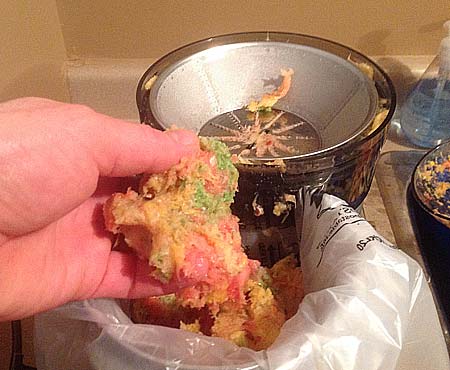 I was surprised how easy clean up is, at least with my Breville juicer. The whole unit is basically only three parts that is held together securely by a metal clamp arm:
I was surprised how easy clean up is, at least with my Breville juicer. The whole unit is basically only three parts that is held together securely by a metal clamp arm:
Slide that arm off and the unit easily pops apart, and a bit of soap and water later, everything’s clean. About the only thing that’s a bit of a pain to clean is the metal basket, it requires some scrubbing – but Breville includes a nice brush for that, so it’s not too bad. My next juicy tip is to find a tray for the juicer and the other tidbits associated with your juicing – that way, you can easily carry and store the whole setup, and let everything drip-dry at the same time.
The Process of Juicing – Your Fruits and Vegetables
Here’s where things get fun – now you get to select the foods you want to juice! Let your imagination soar here, but don’t get too carried away! I found out the hard way that strong-tasting veggies like radishes can end up dominating the flavour of your juice… so when you start out, you might want to keep it simple and stick your favourite fruits as a base. Have fun experimenting! My personal top ten list is:
- Watermelon
- Pineapple
- Grapefruit
- Oranges
- Cucumber
- Carrot
- Spinach
- Apples
- Lemons
- Cantaloupe
I find juicing is really not practical as a daily activity. In fact, if you want enough juice to carry you through the week, you need to give yourself at least an hour (probably closer to 1.5 hours) of time for juicer prep, food prep, juicing, and clean up. That’s why I like to do my juicing on the weekend – I’ll usually save a 4L milk jug and another juice container, and fill those up with juice, which will carry me through a good part of the week (depending on how juice I’m including in my meal routine).
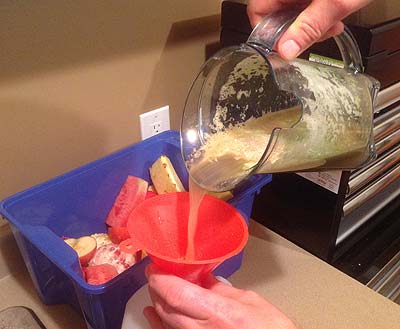 The actual process consists of removing all citrus rinds (you can’t put those into the juicer), and all other hard outer rinds like you find on pineapple and watermelon.
The actual process consists of removing all citrus rinds (you can’t put those into the juicer), and all other hard outer rinds like you find on pineapple and watermelon.
Then you just need to chop into chunks small enough to fit into the feeder tube at the top of the juicer:
Some items work better with these spinning juicers than others. Soft items such as spinach are a challenge, because even when the juicer is set to low speed, they will get flung out of the juicer as fibre before they can be ground up enough to extract the juice. They actually make a different kind of “masticating” juicer which works better to crush softer items to extract their juice, but that’s a lot of additional expense (not to mention more equipment to store). A good alternative is to use a simple blender to pulverize soft items with a bit of water, and add that directly to your juice.
The Final Product – How Does Your Juice Fit Into Your Diet?
So, how does the delicious juice you’ve made fit into your diet? Really, that’s up to you. I make my own juice for a couple of reasons – first, I like to have it around to supplement my regular meals and in-between meal hydration. Second, I’ll often use my juice as a meal replacement.
There are many juicing advocates on the Internet that have many arguments for why the “natural” juice you make yourself is better that store-bought juice. They may have points regarding preservatives, pasteurization, added sugar and fructose syrups, and general quality. Frankly, those things don’t concern me much, all I know is that the juice I make is quite delicious!
If you’re going to replace meals with juice, there are few things to consider. First, and probably most important, is how frequently you’re going to replace meals. Consuming just juice for an extended period of time qualifies as a “juice fast” – while there are benefits to that approach, you also have to be careful. I find that I can’t juice fast for more than 3 days, but you’ll see people on the Internet recommending much longer periods of time. Also, if you’re going with just juice, you’ll probably need to consume juice more frequently during the day, otherwise you may find yourself getting very weak. But hey, I’m no nutritionist – I would recommend consulting with your doctor, and also listening very carefully to what your body is telling you.
In my case, juicing has been a healthy way to reduce calorie intake, stay hydrated, consume more fruits and vegetables, and introduce some interesting variety into my diet. It’s been a lot of fun, so much so I think it will probably be a regular part of my diet going forward. If you end up trying juicing, I hope you also find it rewarding!
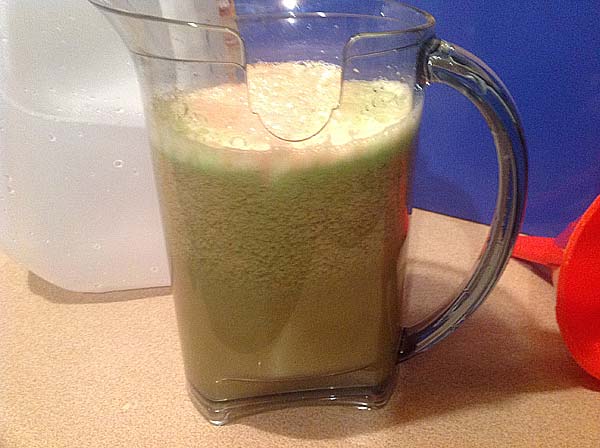
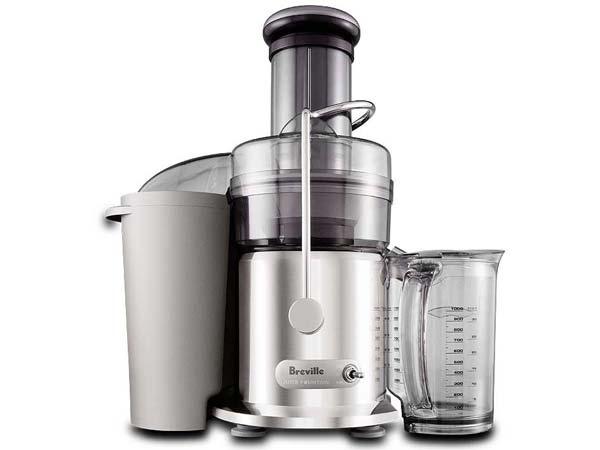
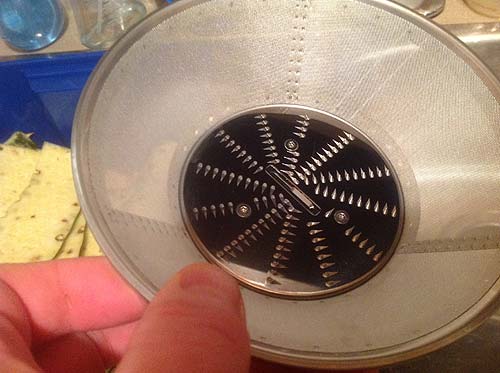
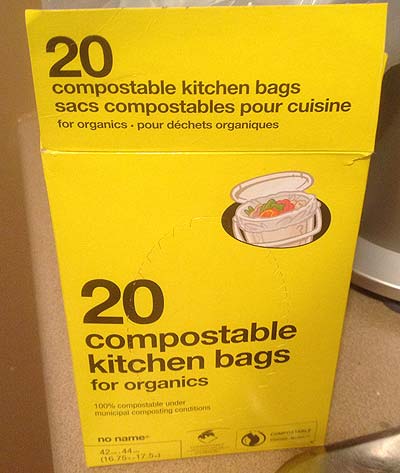

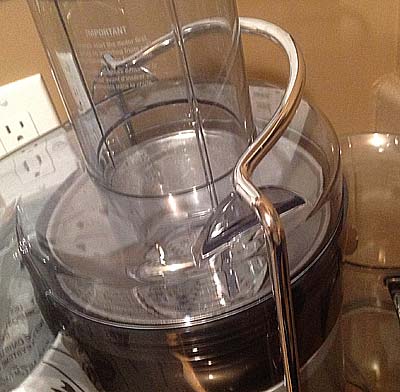
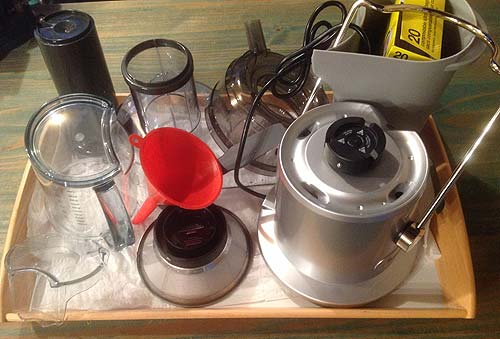
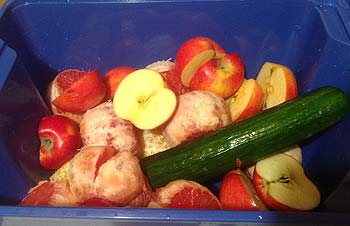
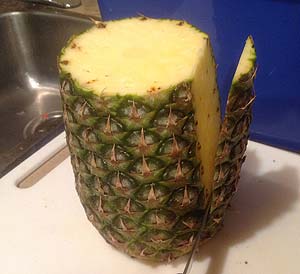
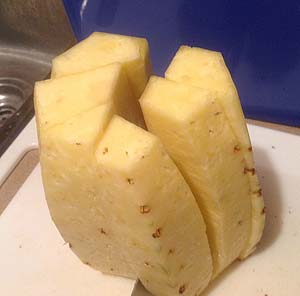
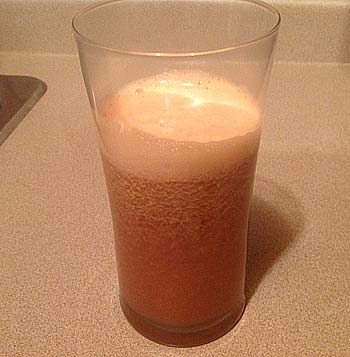


Great article Joe! I would add that I am his wife and while I follow the other healthy changes with him (which have been working – I feel great!) I haven’t done juicing with him because I was a little worried all the fructose in the fruit would mess with my blood sugar (I am not diabetic but I used to suffer sugar lows until I cut out most white flour products and sweets). That being said, once in a while I too enjoy a glass of his homemade juice and OMG! the fresh flavours are amazing. Cucumber, pineapple spinach and watermelon are my favourites just for the flavours. I also enjoy his regular smoothies – again just fruit, yogurt and often a little protein powder and that’s it – a great breakfast and so healthy. With all the extra fruit in my new diet, I have not experienced any sugar issues even though they are high in natural sugar, still a mystery to me but a good one! Keep up your great work Joe!